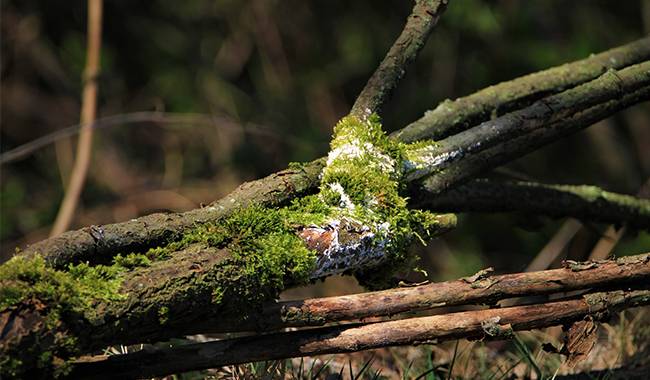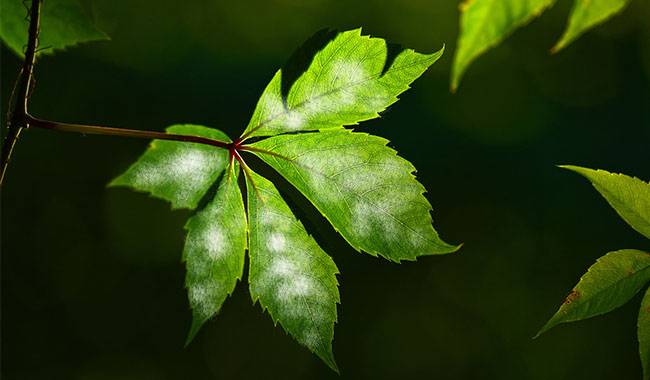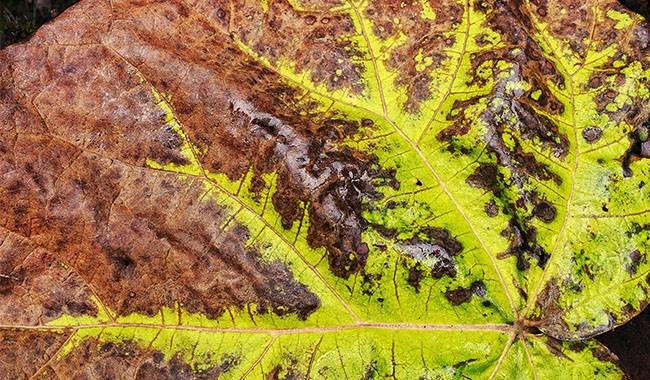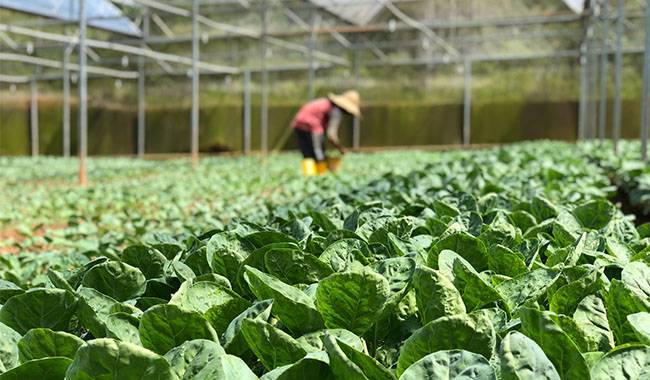
Phytophthora, which has crossed the threshold of harmfulness, is the real scourge of gardeners. This disease is particularly dangerous in the limited space of greenhouses and conservatories. Within 2-3 days, under optimal conditions for disease transmission, up to 70% of tomato crops die.
Phytophthora is spread by ascospores, which overwinter on leaf and stem remnants of various plants, soil, bindings, and other building and support components in greenhouses and near greenhouses. They maintain their viability for 3-5 years and can survive soil frosts of 68-86°F (20-30°C).
Therefore, thorough annual disinfection of the greenhouse is very important to eliminate Phytophthora spores and prevent the onset of disease in the new season.
PREPARING THE GREENHOUSE FOR THE NEXT POST-PHYTOPLASMA EPIDEMIC SEASON
There is no single chemical that can be used to control a phytoplasma epidemic once it has been sprinkled in the greenhouse. The complex fall and spring work and the continuous diagnosis of disease detection in cultivated plants determine the efficiency of control and the timely implementation of protective measurements.
Preparation of the greenhouse for the next season can be divided into 2 stages.
- External works are cleaning and disinfection of the territory and the framework of the greenhouse itself
- Internal works for disinfection of the frame, premises, and soil.
Preparing the greenhouse from the outside
After the harvest, clean the broken containers and tools around the greenhouse. All tools used during the season (shovels, pruners, saws, knives, etc.) should be repaired, disinfected, and transferred to a designated drying room.
Collect and destroy fallen leaves, dried weed residue, and other debris around the greenhouse that may harbor Phytophthora spores and other pests and diseases.
Thoroughly clean the top cover of the greenhouse to remove dust. This can be done with soap and water, but it is best to use a disinfectant. Disinfect the greenhouse with a bleach or copper sulfate solution to prevent phytophthora.
Note! Always ensure personal hygiene when handling disinfectants and other chemicals.
If the greenhouse has removable covers for the winter, carefully remove them after washing, roll them up and store them in a dry, disinfected room. Inspect the greenhouse frame and make any necessary repairs.
If the greenhouse is covered with polycarbonate or glass, then make repairs, replace the glass or repair the damaged part of the polycarbonate. The slots in the crossbeams are sealed with sealant. Then the outside of the greenhouse cover and the frame itself is thoroughly cleaned. During the winter months, snow piles are constantly removed from the greenhouse.
To reduce pests in the area around the greenhouse, never plant nightshade near the greenhouse, especially potatoes (the crop most infected by Phytophthora).
INSTRUCTIONS FOR THE INNER WORKINGS OF THE GREENHOUSE
In order to properly prepare and disinfect the interior of the greenhouse from Phytophthora, it is more practical to do all the work in the following order
Remove all portable open irrigation systems (hoses, irrigation buckets, containers, tools, etc.). Clean, disinfect and move them to the utility room.
Remove shelves, boards, poles, nails, and twine residue from the greenhouse. Sort, disinfect, dry, and store in a closed room.
Clean plant debris from seedbeds – a potential source of phytophthora. Remove tracts and roots, unharvested, diseased, unripe fruit, and other plant debris.
Healthy tracts (such as cucumbers) can be placed in the compost pile. Be sure to burn all vegetation and debris removed from the greenhouse, especially if the crop has been infected with phylloxera.
Before disinfecting the greenhouse, it should be bathed to remove all dirt and grime. Wash the interior surfaces, including the frame, with soapy water or by adding copper sulfate. Metal galvanized structures are cleaned with a 9% solution of vinegar.
At the end of the general work, prepare a disinfectant solution for the plant and the necessary equipment.
The prepared fresh slaked lime solution is painted white from the back wall of the greenhouse to the door, literally, all wooden structures of the greenhouse are hung intensively, not missing hard-to-reach places, cracks, ceiling panels, fixtures, support bars, etc.
Metal frames or separate metal parts in the greenhouse must be painted. If painting is not possible, treat them with a Bordeaux mixture.
If you do not have time to disinfect the greenhouse for phytophthora in the fall, clean it 3-4 weeks before the start of the spring seasonal work by painting the rest of the boards and frames white with fresh slaked lime and the metal frames with 9% vinegar.
Close the greenhouse for 2 to 5 days, ventilate and treat with a bio fungicide.
Remember! Always follow the rules of personal hygiene protection when using chemical solutions: respirator, goggles, headgear, gloves, shoes, covered clothing.
METHODS OF GREENHOUSE DISINFECTION TO PREVENT PLANT EPIDEMICS
- Greenhouse disinfection methods can be divided into:
- Chemical.
- Biological.
- Temperature.
- Complex.
- Chemical treatment.
- The most readily available solutions for room disinfection are:
- Bleach lime.
- Quicklime.
- Concentrated copper sulfate solution.
- Sulfur powder.
- Chemical fungicides.
To prepare bleaching lime, dissolve 0.5-1.0 kg of the dry substance in 10 liters of water. Adhere to it for 3-4 hours, filter and spray the entire interior, carefully coating all wooden structures (additional protection against decay).
Seal for 2-3 days, then ventilate. After drying from bleach fumes, treat the wooden frame with a 5-10% copper sulfate solution and paint the metal frame (no less than once every 2-3 years).
The room can be disinfected with a solution of quicklime. In order to prepare a solution of quicklime, the following components are used. Mix 3-4 kg of fresh slaked lime with 0.5 kg of copper sulfate and 10 liters of water. The thick slurry thoroughly bleaches wooden frames, masonry, and all places where pathogenic microflora can overwinter harmlessly.
Copper sulfate perfectly copes with phylloxera. Preparing a saturated solution of 100-150 g of alum in 10 liters of water, this composition thoroughly bleaches all places where pathogenic microorganisms accumulate.
The most popular among the various methods of disinfection is fumigation with block sulfur. This method requires much less time and labor costs. The smoke penetrates all hard-to-reach places in the room, leaving no chance for phytophile bacteria to survive.
Spread 100-150 grams of sulfur blocks on an iron tray. Trays containing sulfur mixed with kerosene were placed one for every 1.0-1.5 m2 of greenhouse area and then lit, from the back wall to the exit of the room.
The treated room is sealed and left for 4-5 days, then ventilated. You must wear a respirator, goggles, and protective clothing. It is important to remember that the sulfur dioxide formed by burning sulfur is dangerous to human and animal health.
Sulfur fumigation can be done with a readily available sulfur fumigator. Directions for use are described in detail on the package.
Remember! If the greenhouse has a metal frame and is not painted, you cannot use sulfur fumigation because it will activate the corrosion process.
The chemical market offers a range of versatile and effective chemical fungicides that can quickly disinfect greenhouse spaces and soils from acidophilic bacteria. They include compounds such as sulfur, iron, mercury, copper, manganese, etc., which are very dangerous for human and animal life and health.
Therefore, it is best not to use them in private properties or to use them with great caution, clearly following all recommendations for the use of such substances. The working conditions and other requirements for fungicides are always stated on the packaging or as an appendix – recommendations.
Chemical fungicides against Phytophthora can be used in the form of fumigation or spraying, and are recommended for use in the morning or evening within a room temperature of 10-77°F (10-25°C).
Spray the room with the working solution, close it for 2-3 days, then ventilate and dry.
Chloropicrin is used for the vaporization of premises at 15-40 grams of the substance per cubic meter. Treatment should be carried out at a temperature of not less than 53 °F (12 °C). Close the room for 3-5 days, then ventilate.
TEMPERATURE TREATMENT
Using chemicals to control phytophthora can be replaced by solar “baking” of the room. If it’s hot and dry in the fall, seal the room. The temperature inside rises to 95°F (35°C). The airtight room stays sealed for a few hours to 2-3 days.
Zoospores reduce their activity at 86°F (30°C) and begin to die at 95°F (35°C). Naturally, the source of the disease is not completely killed, but the room is cleared of pathogens by 70-80%.
Greenhouse freezing is actively used in cold regions to control phylloxera and other diseases. It is effective in small greenhouses. Leave the greenhouse open for a few days in the cold of winter. It is not necessary to cover the soil with snow because phylloxera spores will overwinter comfortably under a layer of snow. After the frost, the soil in the greenhouse is covered with snow.
APPLICATION OF BIOLOGICAL AGENTS
At home, especially if the greenhouse is small, it is advisable to disinfect the greenhouse with biological agents to prevent phytophthora outbreaks. The preparation was developed on the basis of a positive microbiota, harmless to humans, with the ability to suppress fungal diseases for several years.
The only condition is that the bio fungicide does not work at low temperatures. Treatment of rooms with bio fungicide solutions must be done at room temperature of no less than 53-57°F (12-14°C).
Use a bio fungicide for room disinfection. Dissolve 100 g of the substance in 10 liters of dechlorinated water and spray the room thoroughly. 1.5-2 weeks later, repeat the spraying.
Biocide Phytosporin is a universal disinfectant for greenhouses. It is used to treat the premises, soil, and plants during the vegetation period. In order to spray the room, prepare a saturated working solution (50 ml per 10 liters of water) and treat the room thoroughly. After spraying, the greenhouse is closed for 4-5 days. Then carry out further work.
Trichodermin, Bactofort, and other biological preparations are treated in the same way.
COMPLEX PROCESSING OF GREENHOUSES
In recent years, greenhouse workers use complex measures to combat phytophthora.” Frying” and “freezing” rooms, as well as treatment of plants in the season with biological preparations “Phytosporin-M” and others.
These preparations are also effective for the disinfection of premises and soil. Detailed dosages and conditions of use of biocides are described in detail on the package, in the insert, or in the accompanying recommendations.
For home greenhouses, the most acceptable in terms of labor costs, costs, and health safety is the complex use of temperature and biological methods of treatment of premises, which provides effective protection against plant diseases and allows you to harvest eco-friendly vegetables.
DISINFECTION OF PHYTOPATHOGENIC OUTBREAKS IN GREENHOUSES
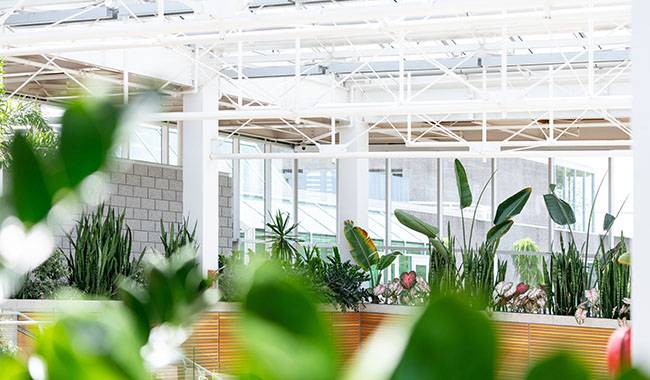
In a closed space, greenhouse soils quickly lose their agronomic structure, reduce fertility, increase acidity and accumulate pathogenic bacteria and animals. In order to increase the use of the greenhouse, the greenhouse soil should be systematically restored. Soil health can be improved in several ways.
The most harmless for the environment, humans, and animals is the complete or partial replacement of the soil in the greenhouse. This method is very simple but time-consuming and more suitable for small greenhouses.
Usually once every 2-3 years (and, if possible, once a year), the top 4-10inch (10-25 cm) layer of soil is carefully removed and brought to a prepared area where they form a “pastry” of waste soil, dry healthy tracts, autumn leaves, and compost.
Each layer of 2-6inch (5-15 cm) in height is watered with a solution such as water or Microbial Inoculant during warm periods. Composting with solutions of these biological agents helps destroy negative microflora and speeds up the processing of plant material.
Constant eradication will speed up the process and after 2 years, the renewed soil will be ready for vegetable crops. Typically, topsoil is replenished with soil from forests or fields or soil that has never been used for vegetables and other garden plants and has not been chemically treated.
Breaking up the renewed topsoil into beds and seeding it with wintergreen manure will enrich the soil with organic matter and destroy some disease-causing microbiota at the same time.
Topsoil in greenhouses can be healthier in another way. 6-8inch (15-20 cm) of old soil can be sifted literally or with a sieve that has wide holes 0.1-0.2inch (0.3-0.5 cm). The soil will be cleaned of excess roots, decaying residues, and some pests. The cleaned soil is sown with green manure.
If the soil is heavily infested with phytoplasma, a high cleaning effect provides sowing of white mustard for one season. First, the soil is treated with lime and then sown with white mustard. The combination of these two methods almost completely removes plant pathogens from the soil.
In Dhaka and individual garden plots, soil disinfection is best carried out using biological methods. It is particularly effective in combination with soil pretreatment.
After treatment of greenhouses with chlorine, caustic lime, and copper sulfate, part of the solution falls on the soil. We mix it by loosening the top layer. The dry soil is given over to the sun. High temperatures of 86-95°F (30-35°С) in the soil dried and heated by the sun will destroy a considerable part of pathogenic microflora and make the soil healthy.
If you do not have time to disinfect the soil with phytoplasma in autumn, you must do it 2-4 weeks before the start of seasonal work in spring. Soil is doused with hot water and covered with aluminum foil for deeper steaming.
Both of these hot soil disinfection methods destroy not only some of the pathogens but also the useful microflora. After such disinfection, the soil needs to be rejuvenated.
To restore useful microflora, if necessary, wet the soil to a temperature of 53-57°F (12-14°С), treat it with a solution of “Microbial Inoculant” or sprinkle it with “Effective Microbial (EM) Fertilizer”, cover it with a rake and mulch it with mulching material.
In a warm, humid environment, effective microorganisms begin to multiply vigorously, using pathogenic microflora as food.
To maintain healthy soil levels during seasonal work, irrigate approximately every 2-4 weeks, apply the same bio fungicide – “Phytosporin-M” – to the soil as the plant treatment, etc.
How to prepare a bio fungicide solution for soil treatment is clearly specified in the accompanying recommendations or on the drug package. Disinfection of greenhouse soil with chemicals is not recommended at home, even for those who like to do everything quickly and in a hurry.
Among the chemical methods of treating the soil in private greenhouses, it is allowed to treat the soil with a hot solution of manganese (dark pink in color) or a solution of copper sulfate, prepared at the rate of 25-30 g of the drug in 10 liters of water.
Within 2-3 days after the soil treatment, the soil is re-tilled to the incomplete jam of the spade and sown. It is not recommended to use these soil disinfection methods frequently and in high concentrations. Manganese and copper salts accumulate in the soil and depress the plants.
PATHWAYS OF REINFECTION WITH PHYTOPHTHORA IN GREENHOUSES
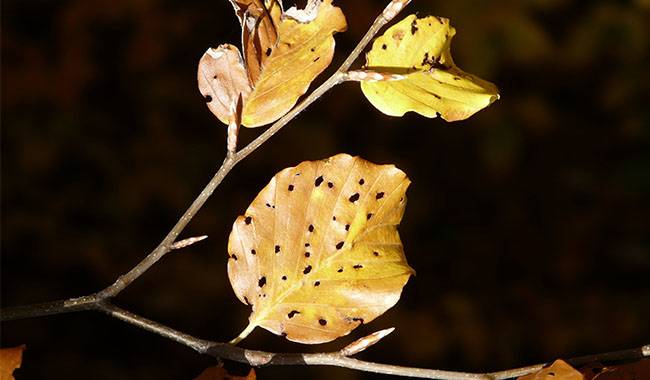
Despite greenhouse disinfection, Phytophthora can manifest itself on tomatoes and other nightshades in the new season.
Pathways of reinfestation:
- poor quality and unsterilized seed material.
- Sick seedlings.
- Phylloxera zoospores can be transferred from open areas and neighboring gardens during ventilation.
- A drop of water can infect the soil during high humidity in the greenhouse, especially if the latter is not well disinfected.
- Tools and utensils (hoses, containers, shovels, etc.) that have not been disinfected can become a source of infection.
HOW DO YOU KNOW IF THERE IS A PHYTOPLASMA OUTBREAK IN THE GREENHOUSE?
Tomatoes, the most common crop grown in protected environments, are the most susceptible to acidophilus.
The lower part of the leaves near the soil is covered with individual white spots of cobwebs. They blend into a brownish hue. The leaves curl, become dry, and fall off. Sometimes the disease begins with brown spots on the upper edges of the leaves.
After 2-3 days, the stems and petioles are covered with brown spots. This sign indicates that the plant epidemic has entered the most active stage of reproduction. During this period, the entire tract, inflorescence, and fruit are affected by lightning speed.
Fruits are initially covered by black spots located under the pericarp. Their color under the pericarp is brownish-red. These spots quickly soften and the tomatoes begin to rot, which is caused by the accompanying rot.
The only way to save the crop from phylloxera is to harvest it immediately and allow it to reach maturity.
Remember! Do not use tomatoes that have been slightly damaged by Phytophthora (i.e. in the black spot stage).
Epiphytic growth of Phytophthora can destroy your crop within a few days unless you act promptly to protect your plants.
CONDITIONS FOR PHYTOPHTHORA SPORULATION IN GREENHOUSES
Favorable conditions for Phytophthora spores in greenhouses and other enclosed spaces to begin activating and multiplying are
- Uncontrolled increase of humidity.
- Dripping water from the greenhouse coverings.
- Temperature changes at night and during the day.
If the humidity in the greenhouse is higher than 75% and the air temperature is 53-59 °F (12-15 °С), the ascospores begin to actively multiply. They enter the soil together with water droplets. The incubation period lasts 7-12 days and the disease breaks out. The phytoplasma epidemic cannot be eradicated forever. It constantly returns.
Therefore, in addition to the systematic disinfection of greenhouses, you must take measures during the growing season to protect tomato fruit from phylloxera for adequate healthy yields.
Read more about protecting tomatoes from phylloxera in the article “How to control tomato late blight. ” Prevention and control measures and “Why tomato plant leaves turn yellow Planting for tips“.





